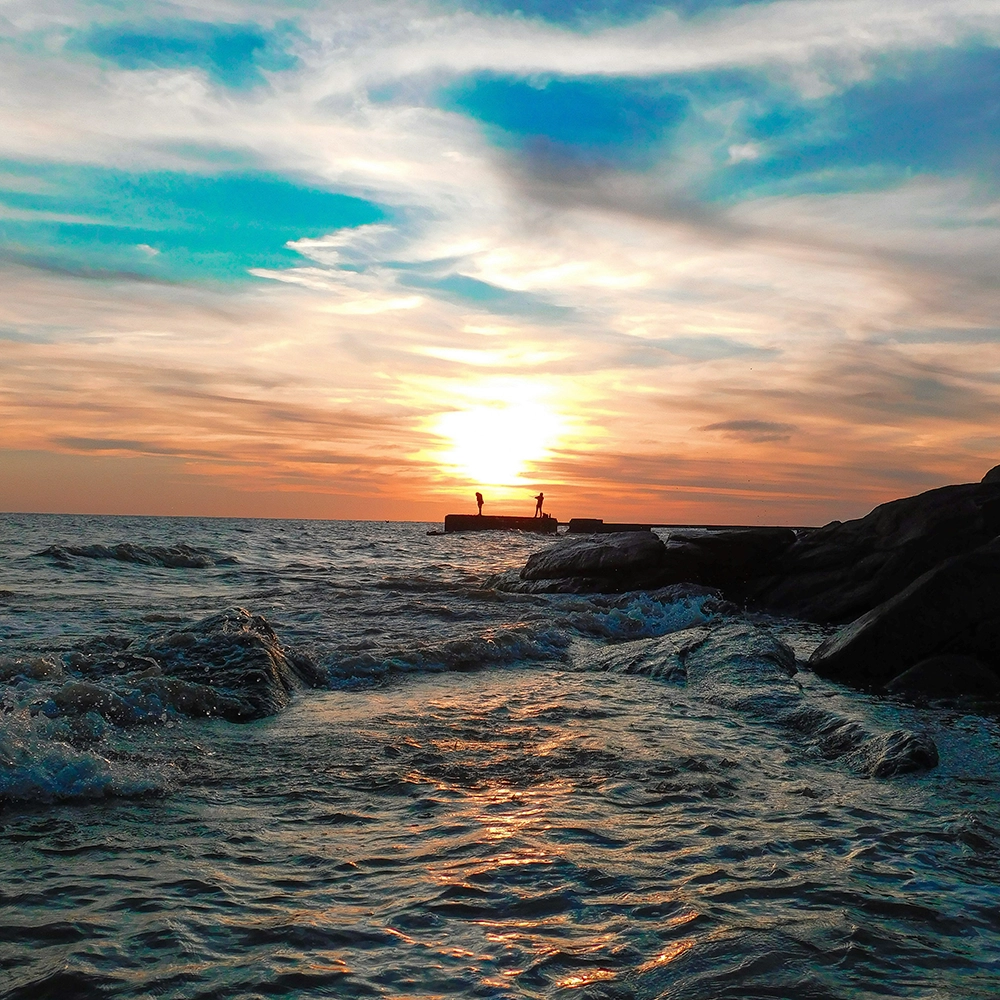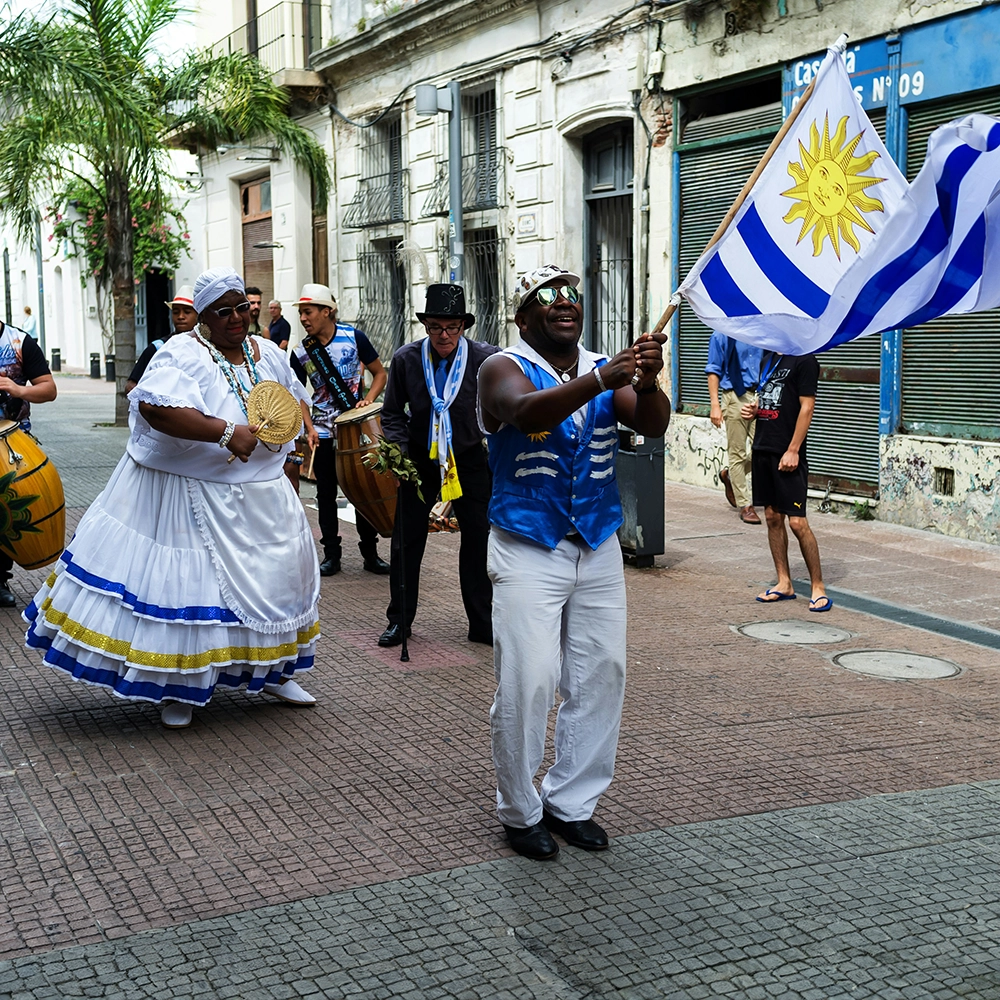I’ll never forget the first time I stepped into Escaramuza Cafe.
Moseying down the street, I passed an unassuming facade with a sign saying something about books, so naturally I opened the door.
I crossed into an oasis — a bookstore with elaborately tiled floors, high glass ceilings, ivy draped over brimming shelves. Swooning, I wandered further back, where the bookstore melded into a dreamy garden cafe, a secluded patio strewn with plants and wafts of fresh baked bread, and a cozy corner table waiting just for me.
Let me back up for a second — I had been living in Montevideo for about a year, and this kind of experience had become routine. This city oozes good nooks.
Tourists often run into trouble in Montevideo because there aren’t as many “sights” as in other capitals, and because many of the go-to guidebooks haven’t gotten around to it yet. But after a few years here, I am happy to report that it’s well worth a visit (or extended stay — some of us just can’t seem to leave, myself included).
Where Is Montevideo, Uruguay?
Uruguay is located in South America, on the continent’s eastern coast. To its north is Brazil, and to the west and south is Argentina. Uruguay has about 400 miles of coastline, much of it on the Atlantic Ocean, which makes it an unexpectedly great spot for surfing.
Montevideo is located on the coast of what appears to be the Atlantic but, in reality, is the wide mouth of Rio de la Plata. It is the capital of Uruguay, home of about 1.7 million people (as of 2024).
What Language Do They Speak in Uruguay?
Spanish is the official language of Uruguay. It’s estimated that nearly all Uruguayans speak a Rioplatense dialect, which is also common in parts of Argentina.
What’s the Best Time to Travel to Uruguay?
Peak travel time in Uruguay is November to February when the continent is enjoying its summer months. Temperatures range from the low 70s to mid-80s.
November in particular is a favorite time to visit in Uruguay. Cities like Montevideo and some beach towns get most crowded in December, so a November trip means you can beat the rush and maybe still catch the end of whale watching season.
Temperatures in Uruguay rarely drop below freezing. Although some coastal resorts close in the fall, the lack of severe winter weather means you can visit in the off-season and still enjoy plenty to do.
A trip in the fall (March through May) could give you a glimpse of the vineyard harvest and all the festivals that come along with it. Winter is the time to spend in the countryside, hiking and horseback riding.
Is Montevideo, Uruguay, Safe?
As of June 2024, the U.S. State Department had issued a Level 2 Uruguay Travel Advisory, meaning tourists should exercise increased caution. The primary risk to travelers is crime, particularly in Montevideo and Canelones and Rivera departments (departments are similar to U.S. states).
Uruguay is relatively safe from natural disasters. The most common hazards include seasonally high winds coming off the Argentine pampas or plains, drought, and floods.
Inside Scoop on Uruguay
- In general, they say Uruguayans have three loves: beef, soccer (fútbol), and mate. All of these are excellent conversation starters.
- To look up city bus routes, use the municipal site “Como Ir.” For inter-city buses, use the central terminal site Tres Cruces. Taxis are affordable, but Uber and Cabify are cheaper.
- By paying with foreign credit cards in restaurants, you get a 9% discount because they remove the VAT taxes (or IVA in Spanish). Visa is widely accepted in Uruguay.
- If you’re a digital nomad, or anyone seeking a well-equipped workspace, head to Sinergia Cowork, where natural light, strong Wi-Fi, and excellent people abound.
- It is possible to get a direct flight from the United States to Montevideo, although it’s probably more common to arrive via Buenos Aires. You can fly from Argentina or take a high-speed ferry.
What to Do in Montevideo
- There’s a daily free tour of the old city at 10 a.m. from the Plaza Independencia. While you’re in that plaza, take the stairs that lead down underneath the statue, where you’ll find a memorial to Artigas, their national hero.
- The best sunset spots are the Punta Carretas peninsula and Escollera Sarandí. If you want to do as the locals do, take mate tea, bizcocho pastries, and a friend to share them with.
- The best view of the city is from the 22nd floor lookout of the Intendencia.
- At the Tristán Narvaja market on Sunday mornings, you can forage through everything from fresh produce to spare adapters to thick stacks of Chopin’s finest compositions.
- On the corner of Tristán Narvaja and Mercedes is a nook called Babilonia Libros that may be my favorite used bookstore ever. (Oprah’s a fan, too.)
Must-Try Uruguay Food
- Uruguayans mean serious business about their beef. Fun fact: Uruguay has more cows per capita than any country in the world. Eating asado grilled meat at a parrilla — or better, at someone’s house — is an absolute must.
- The best place to eat beef isn’t the Mercado del Puerto but La Pulpería, although heads up. It’s often closed, in which case, you can also try La Otra.
- Mate (pronounced MAH-tay) is a traditional bitter green tea that most of the country (along with yours truly) adores and drinks daily. The pot is the mate, and it holds carefully prepared yerba herbs and a bombilla metal straw with a bottom filter to distill the leaves. The thermos holds hot water to refill, sip, and share throughout the day. Ask a Uruguayan how they prepare their mate or which variety they prefer, and you’re in for an entire conversation — and likely an invitation to try for yourself, which you absolutely should accept.
- For chivito sandwiches, El Tinkal serves the best traditional take. Chivito is a national dish of Uruguay and although the name translates to “little goat,” it’s typically served with sliced beefsteak, ham, mozzarella cheese, tomatoes, mayonnaise, and olives.
- The best panaderías are Biarritz for bizcocho pastries and Como en Casa for a slew of everything.
- In the old city, Cafe Brasilero tends to get a lot of fame, but my favorite place to hole-up is La Pasionaria.
- For an easy, affordable, and healthy lunch on the go, step into any rotisería bakery and order a slice of tarta. The classic is called pascualina. It’s a spinach and hard-boiled egg tart, and it’s delicious.
- On Tuesdays, a hip bar called El Mingus has live jazz that goes swimmingly with its homemade grappamiel (a drink made of a national liquor mixed with honey).
- A beautiful local cafe called El Club Natural y Popular opens Thursdays after work for tapas, drinks, and open mic nights.
Art & Culture in Montevideo
- For street art, wander around the neighborhoods of Cordón, Palermo, and Barrio Sur.
- The Estadio Centenario hosted the first World Cup (Uruguay won!), and both the stadium and adjacent museum are open for visits.
- On Wednesdays, you can tour the ornate Teatro Solis for free. The theater is home to music, dance, theatrical performances, and poetry readings.
- On Sundays starting around 9 p.m., the traditional candombe drum circles flock to a street called Isla de Flores to practice for Carnaval. Be in the area, follow the music, and stay and dance a while.
- In the Plaza Cagancha at night, elderly couples often dance to outdoor music.
- To find out about other live music happening around town, check out the city's noticeboard or the Facebook group Hoy que hago?
Underlining and intertwining all of this, what makes Montevideo such a brilliant and admirable city are the people. Whatever you do while you’re here, make time to meet and hang out with Uruguayans — they are some of the finest around.
They’re quick to poke fun at themselves, but at the same time quietly adore their country. They are confident and cool, but self-effacing and excellent storytellers who love to make others laugh. They value art and beauty — even their paper currency features painters, poets, musicians, educators, and not one president or general.
They embody the truth that life is better shared, and more than anything they seem to always be trying to sit around, drink mate, swap stories, and enjoy life with their people — and that is the real story you want to be sure not to miss.
Uruguay Travel Insurance
Travel insurance is always recommended for Uruguay or any other international travel. Because your domestic health insurance typically does not cover you overseas, travel insurance can help pay for medical treatment if you get sick or hurt during your trip. Without it, you may be left paying for medical bills out of your own pocket.
Travel insurance can also help to protect the money you prepaid for your trip if you have to cancel it or come home early, as well as your belongings if they get lost, stolen, or damaged.
Find out how affordable travel insurance for Uruguay can be at SevenCorners.com. You can also chat with a licensed agent to make sure you have the best coverage for your South American adventure.



